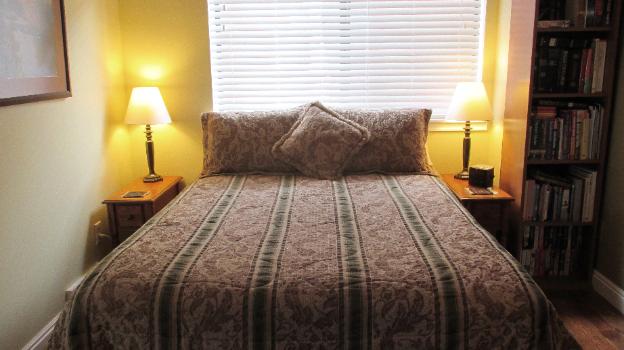
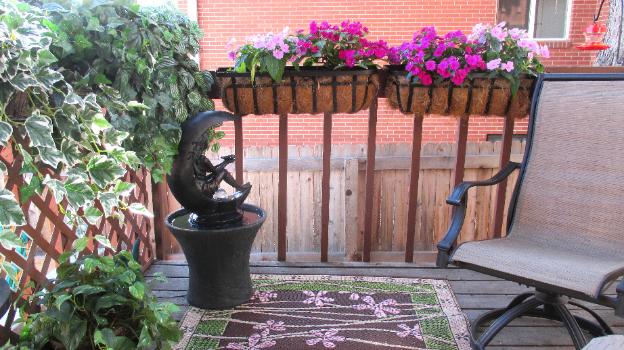
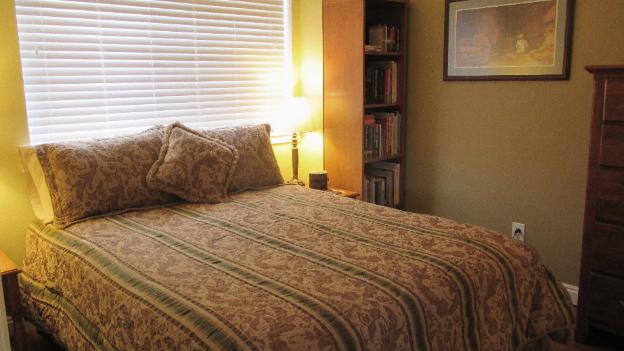
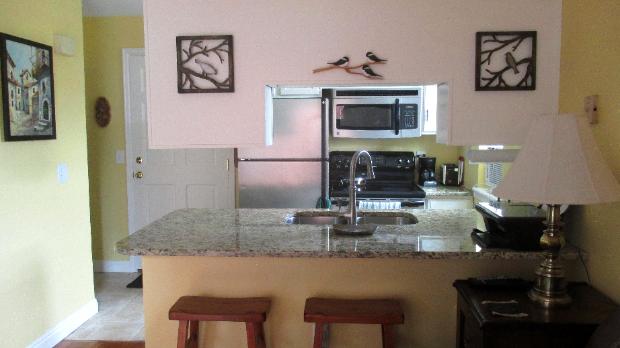
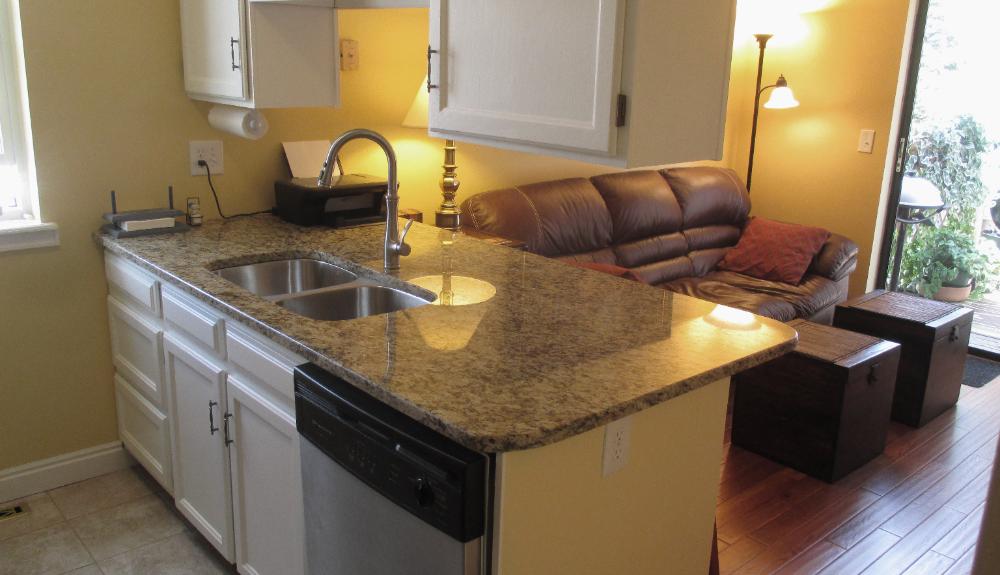

Early Retirement
| Living Tiny |
We call our condo in Boulder our nest. We've
owned it since 2009 and we just love it. It’s cozy
and welcoming, especially after a long trip. It’s
tiny by many people’s standards – just 380
square feet (19 x 20 ft) with a few walls to
separate out a bedroom and a bathroom – but
it's perfect for our needs. As an added perk, it’s
right in the center of town so we can walk to
dozens of restaurants and shops so we rarely
need to use our car. It also happens to be close
to Boulder Creek when we want a little dose of
nature. And if we want to head off on another
adventure, all we need to do is turn down the
heat and lock up. We've even been able to rent
it out when we plan to be away for awhile.
A tiny condo really fits quite well with our
retirement travel lifestyle. Living in a tiny home
can also dovetail perfectly with your plans for
early retirement. Here’s why:
owned it since 2009 and we just love it. It’s cozy
and welcoming, especially after a long trip. It’s
tiny by many people’s standards – just 380
square feet (19 x 20 ft) with a few walls to
separate out a bedroom and a bathroom – but
it's perfect for our needs. As an added perk, it’s
right in the center of town so we can walk to
dozens of restaurants and shops so we rarely
need to use our car. It also happens to be close
to Boulder Creek when we want a little dose of
nature. And if we want to head off on another
adventure, all we need to do is turn down the
heat and lock up. We've even been able to rent
it out when we plan to be away for awhile.
A tiny condo really fits quite well with our
retirement travel lifestyle. Living in a tiny home
can also dovetail perfectly with your plans for
early retirement. Here’s why:
| It Makes Life Simpler |
The idea of downsizing and simplifying seems
to be in the air right now. In the last few years
there's been amazing growth in the tiny house
industry. More and more builders are creating
tiny living spaces, as well as individuals who
are building them on their own or with the help
of friends and family. Communities of tiny
homes are now popping up. HGTV has even
jumped on the bandwagon, launching a version
of House Hunters called Tiny House Hunters.
to be in the air right now. In the last few years
there's been amazing growth in the tiny house
industry. More and more builders are creating
tiny living spaces, as well as individuals who
are building them on their own or with the help
of friends and family. Communities of tiny
homes are now popping up. HGTV has even
jumped on the bandwagon, launching a version
of House Hunters called Tiny House Hunters.
| Lower Purchase Price |
The initial cost of buying or building a tiny
house – between 15K and 80K – is far less than
the cost of a typical house in the U.S., which
averages over 300K. So you may not even have
a mortgage, or at least it will be much easier to
pay off.
house – between 15K and 80K – is far less than
the cost of a typical house in the U.S., which
averages over 300K. So you may not even have
a mortgage, or at least it will be much easier to
pay off.
| Lower Monthly Bills |
Monthly bills are cheaper since it costs far less
to heat or cool a small space. The average size
house in the U.S. runs 2,600 square feet. By
comparison most tiny homes run less than 400
square feet. If you're looking to save money, be
aware of recurring costs such as HOA fees;
these can add up. So if you don’t regularly use
a pool or fitness center, you may want to avoid
buying into a property or community where
you'll be paying for them anyway. If you're
travelers like us, perks like snow removal and
exterior maintenance are worth the cost.
to heat or cool a small space. The average size
house in the U.S. runs 2,600 square feet. By
comparison most tiny homes run less than 400
square feet. If you're looking to save money, be
aware of recurring costs such as HOA fees;
these can add up. So if you don’t regularly use
a pool or fitness center, you may want to avoid
buying into a property or community where
you'll be paying for them anyway. If you're
travelers like us, perks like snow removal and
exterior maintenance are worth the cost.
| Less Stuff |
A tiny home is cheaper to furnish since there’s
so little space to fill. Living in a smaller space
does wonders for helping you get rid of
unwanted stuff. It does require some creative
decorating to maximize storage space in a tiny
home. One great resource on the web for ideas
along this line is tinyhousetalk.com.
so little space to fill. Living in a smaller space
does wonders for helping you get rid of
unwanted stuff. It does require some creative
decorating to maximize storage space in a tiny
home. One great resource on the web for ideas
along this line is tinyhousetalk.com.
| Is a Tiny Home Right for You? |
If the idea of living in such a tiny space seems
daunting or isn’t your cup of tea, you could also
consider sharing a larger space with a
housemate or two. While we were saving for
retirement, we lived in an 1,800 square foot
bi-level home. We lived in the upper half, with a
renter in the lower half. It provided our renter
with an affordable place to stay, and the rent
paid for almost half of our mortgage payment
each month. It was a win-win situation.
Another option: a slightly larger home between
400 and 1000 square feet. Homes of this size are
often described as “small homes” rather than
“tiny” by the tiny house movement, although
there is no hard and fast rule about this.
Living tiny is not for everyone, but given the
high cost of housing today it’s definitely worth
considering.
daunting or isn’t your cup of tea, you could also
consider sharing a larger space with a
housemate or two. While we were saving for
retirement, we lived in an 1,800 square foot
bi-level home. We lived in the upper half, with a
renter in the lower half. It provided our renter
with an affordable place to stay, and the rent
paid for almost half of our mortgage payment
each month. It was a win-win situation.
Another option: a slightly larger home between
400 and 1000 square feet. Homes of this size are
often described as “small homes” rather than
“tiny” by the tiny house movement, although
there is no hard and fast rule about this.
Living tiny is not for everyone, but given the
high cost of housing today it’s definitely worth
considering.
| Our outdoor deck with glass sliding door opens up the space and lets in lots of light |
| We love the condo's layout which includes a separate bedroom, full-size bath, and small but functional kitchen |
| Under-bed storage and furnishings that serve more than one purpose help make tiny spaces functional |
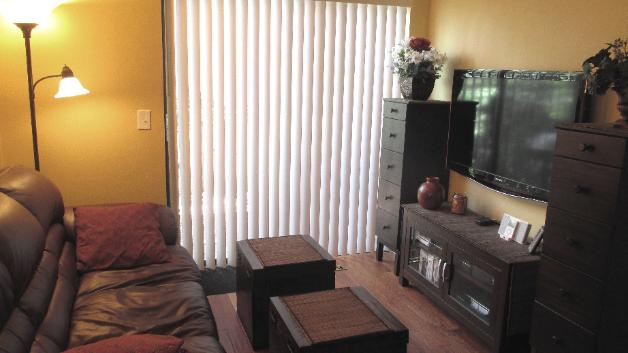
| Living tiny is a wonderfully practical answer for us, and who knows, maybe for you as well |
| When we're not bopping around the world, it's nice to have a little space to call home |
| by Robin Charlton |